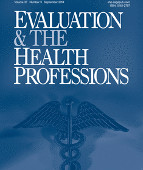Article from: www.thenewspaper.com/news/44/4492.asp
8/21/2014
Study Reveals Reason For Conflicting Red Light Camera Studies
Journal article examines the reason why some studies claim accidents go down with red light cameras while others say accidents go up.
 Red light camera studies are frequently described as coming to "mixed" conclusions with some claiming accident reductions while others show an increase in accidents at photo enforced intersections. Rather than assume that all studies are created equal, a new peer-reviewed journal article finds a reason for the difference in outcomes in the research literature.
Red light camera studies are frequently described as coming to "mixed" conclusions with some claiming accident reductions while others show an increase in accidents at photo enforced intersections. Rather than assume that all studies are created equal, a new peer-reviewed journal article finds a reason for the difference in outcomes in the research literature.
Published last month in the journal of Evaluation and the Health Professions, the review by University of South Flordia researchers Barbara Langland-Orban, Etienne E. Pracht and John T. Large joined Cincinnati Children's Medical Hospital Center's Nanhua Zhang and the University of Florida's Joseph T. Tepas sorted the conflicting studies to determine what made one stand out from another.
The researchers developed four criteria by which the studies could be judged as having a superior methodology. First, the photo enforced sites in the evaluation should not include non-photo enforced approaches as part of the "treated" sites. Second, the study must not show "selection bias" in the choice of camera-free intersections used as a control for the evaluation. If a camera intersection has a high rate of accidents, the control intersection must have a similarly high rate. Third, all relevant independent variables must be tracked, including signal timing, lane geometry, traffic volume and time trends. Fourth, all statistical data must be fully reported.
The studies with the most complete set of variables concluded that accidents increased with the use of red light cameras, while the reports that claimed an accident reduction benefit to camera use relied on more simplistic analyses that excluded factors such as yellow signal timing, the number of lanes at an intersection and time trends.
"The paucity of sound red light camera program evaluations may be due to insufficient data as the cost of collecting the substantial data needed may be prohibitive for some communities and data collection must be planned in advance of the red light camera intervention," the researchers surmised.
The researchers also found evidence that some studies, such as the 2003 study in Ontario, Canada conducted by Synectics Transportation Consultants, appeared deliberately to skew results in favor of camera use.
"The Synectics Transportation Consultants study had data for both before and after time periods, but their statistical analysis merged the red light camera findings with the outcomes from the comparison sites and sites that were treated with a different intervention (stepped-up police enforcement)," the researchers wrote. "Thus, they had the data to conduct a quasi-experimental research study but opted to use a nonexperimental design... Since the comparison sites and stepped-up police enforcement sites had better injury/fatal crash outcomes than the red light camera sites, the study's statistical design obfuscated the actual results at red light camera sites."
Source: Explaining Differences in Crash and Injury Crash Outcomes (Evaluation and the Health Professions, 7/9/2014)
Permanent Link for this item
Return to Front Page
 Red light camera studies are frequently described as coming to "mixed" conclusions with some claiming accident reductions while others show an increase in accidents at photo enforced intersections. Rather than assume that all studies are created equal, a new peer-reviewed journal article finds a reason for the difference in outcomes in the research literature.
Red light camera studies are frequently described as coming to "mixed" conclusions with some claiming accident reductions while others show an increase in accidents at photo enforced intersections. Rather than assume that all studies are created equal, a new peer-reviewed journal article finds a reason for the difference in outcomes in the research literature.